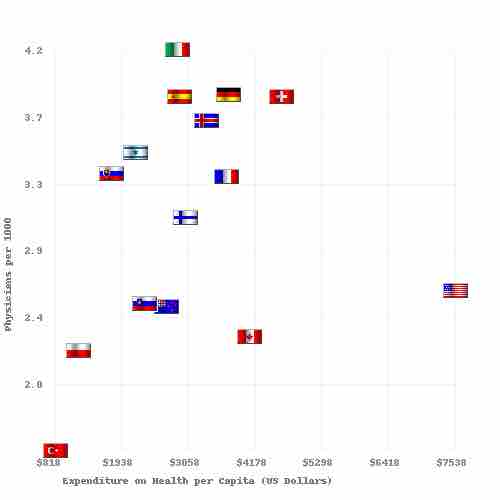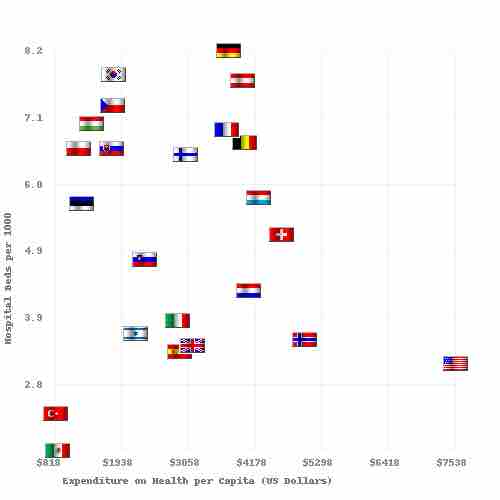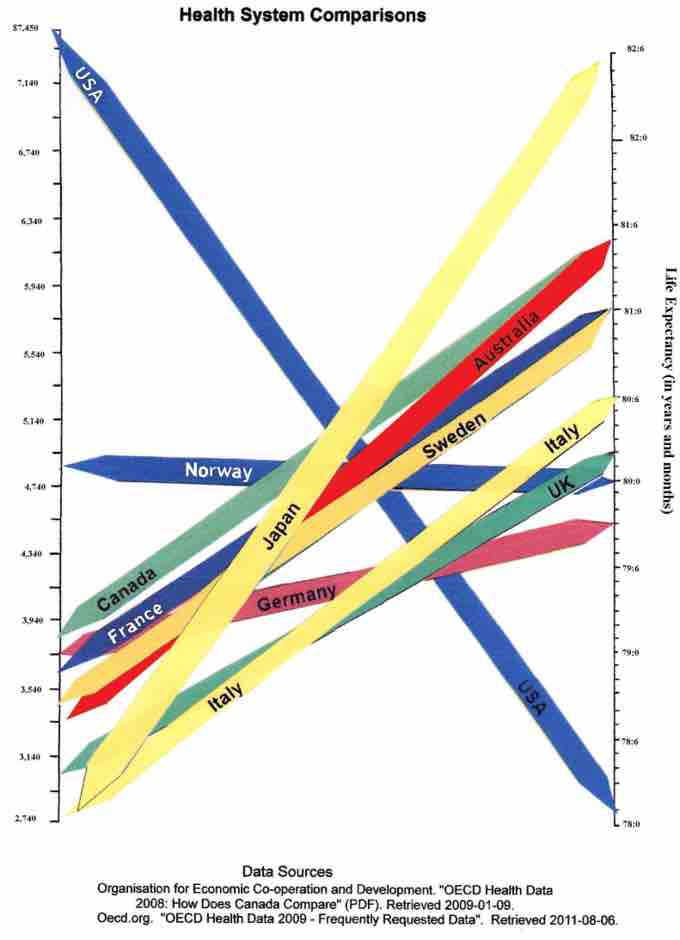Health care differs from nation to nation, sometimes substantially depending upon the level of economic development and the political system in place. Health care systems, on the global scale, is best defined via the World Health Organization's definition: "A health system consists of all organizations, people and actions whose primary intent is to promote, restore or maintain health. This includes efforts to influence determinants of health as well as more direct health-improving activities. A health system is therefore more than the pyramid of publicly owned facilities that deliver personal health services. " This definition is important when observing international health care systems, as it captures both developed and developing nations within this context.
Comparisons: Developed Nations
The World Health Organization has been actively measuring a variety of performance indicators to determine an overall ranking system for health care on a global scale. While this has seen some objections, primarily due to the selection of attributes which weigh into this ranking, it is designed to measure critical success factors which are easily comparably across borders (apples to apples). These measured attributes include health of the population, fair financial contributions, responsiveness of the system, preventable deaths, affordability and a range of other considerations.
The countries which perform the highest on these metrics are primarily located in Europe (generally northern Europe, see ), where social systems are well designed at a governmental level to ensure prices remain accessible and care remain available. Interestingly, the U.S. has consistently ranked poorly and continues to perform substantially below European counterparts deemed developed at similar economic levels. Two good examples are provided in the media relative to the overall capital costs and the subsequent returns on these costs, on being costs to hospital beds per capita and the other costs to physicians per capita . By these measures, European nations capture more value and efficiency within their systems. The most notable difference between these systems is that the US is that, of these countries, the US is the only country without universal healthcare.

Capital Costs and Physicians
Similar to the graph representing costs vs. beds, this chart illustrates the number of physicians available (relative to the population) in the context of capital expenditures. Once again the United States is a clear outlier, where the number of physicians is low and the cost quite high.

Capital Costs and Hospital Beds
This graph demonstrates the apparent correlation between beds (per 1000 people) and the costs involved in healthcare overall. This demonstrates that, on a per capita basis, the U.S. is spending a great deal without capturing much in return relative to available space for patients.

Economic Efficiency of Global Health Care Systems
Healthcare spending per capita is on the left y-axis and life expectancy is on the right. Country differences are apparent, especially when comparing the US to others.
Let us explore further through an example of health care in German (though not all European countries are the same). Germany has consistently demonstrated reductions in cost of health care per capita relative to GDP growth. German health care is regulated by the Federal Joint Commission, a public health organization which leverages governmental health reform bills to generate new regulations. This system also includes a total of 85% of the population on the government offered standardized health care plan, which covers a variety of health care needs across the board. The remaining 15% of the population has opted for private health insurance options, which provide unique niche benefits for specific groups. This system has been highly effective and affordable in providing health care to German citizens.
Developing Nations
With fewer resources, developing nations struggle to compete provide the same access to health care as do developed nations.
China is an interesting case study. China has a great deal of variance in quality and accessibility, with hospital wait times for the poor (depending on severity) taking many hours (sometimes days) compared to the rich, who are admitted immediately. Transitioning towards a system that provides care to the rich and the poor alike is the primary challenge in these developing regions.